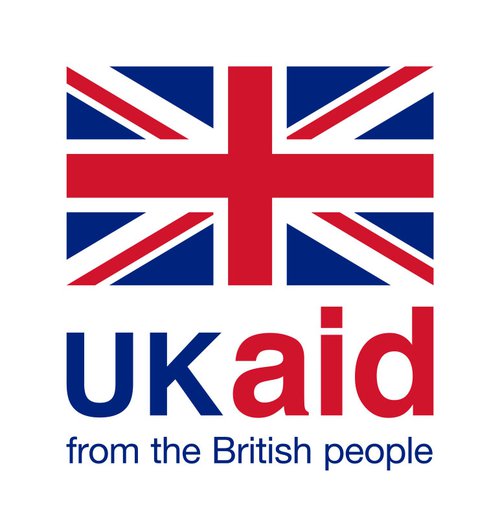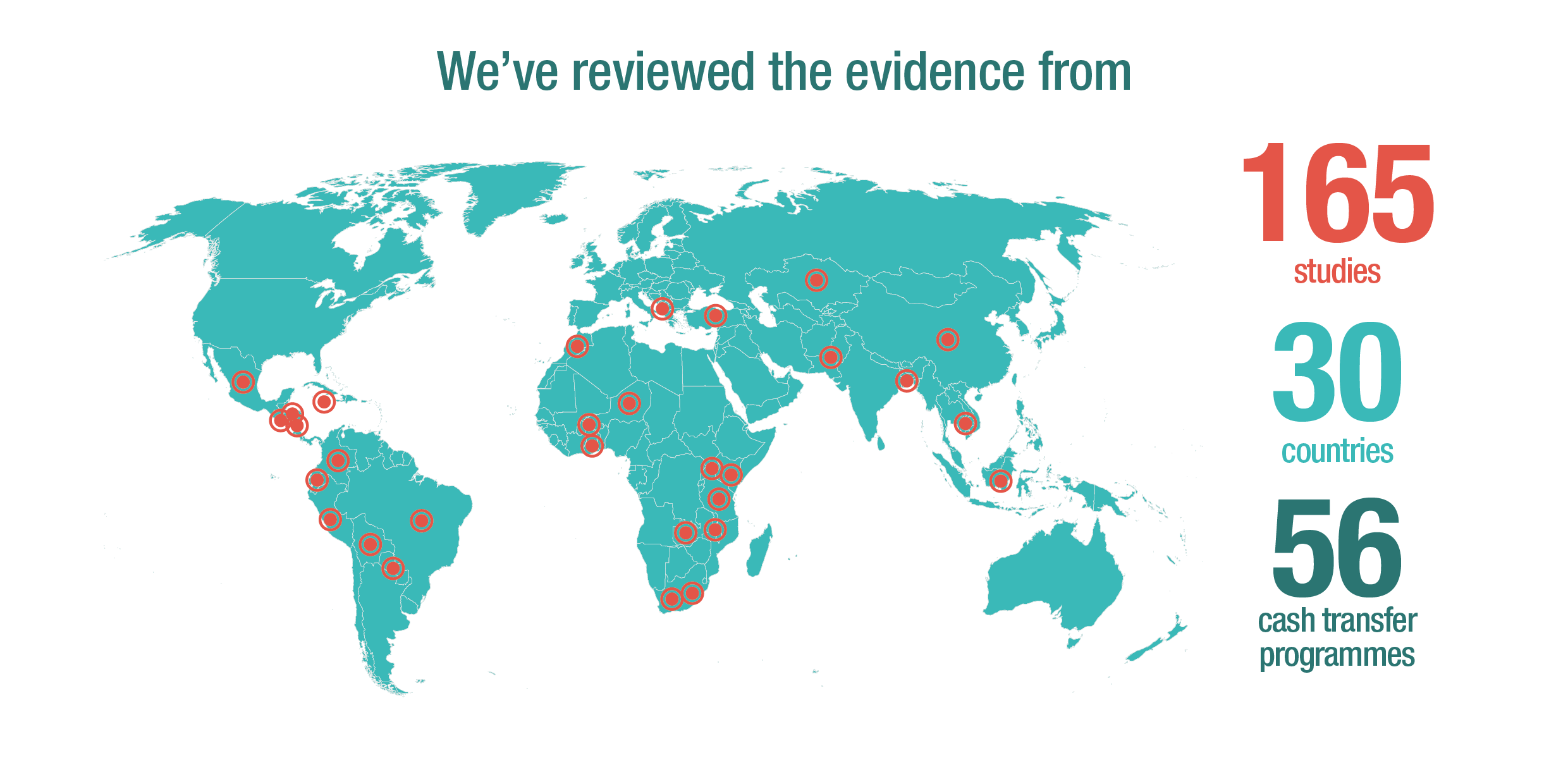A rigorous review of impacts and the role of design and implementation features
This report on the impact of cash transfers assesses and synthesises evidence from 15 years of studies, covering 30 low- and middle-income countries, to provide policy-makers, practitioners and researchers with a single resource on the most rigorous and up-to-date evidence available.
The report contains detailed findings organised by outcome area and design feature, as well as a detailed conceptual framework for the analysis of cash transfers, a summary of existing cash transfer reviews, and a synthesis of the review’s findings and related policy implications.
Focusing on non-contributory monetary transfers, including conditional and unconditional cash transfers, social pensions and enterprise grants, the review addresses three overarching research questions:
- What is the evidence of the impact of cash transfers on a range of individual- or household- level outcomes, including intended and unintended outcomes?
- What is the evidence of the links between variations in programme design and implementation features and cash transfer outcomes?
- What is the evidence of the impacts of cash transfers, and of variations in their design and implementation components, on women and girls?
This briefing paper summarises the findings of a rigorous literature review of the evidence on the impacts of cash transfers on individuals and households, covering literature spanning 15 years (2000-2015) and low- and middle-income countries worldwide.
It provides an overview of the findings by outcome (monetary poverty, education, health and nutrition, savings, investment and production, employment, empowerment) and discusses the role of variations in cash transfer design and implementation details.
This briefing summarises the evidence on the impact of cash transfers on women and girls, drawn from the full report.
It considers:
- Whether the evidence shows that cash transfers have differing impacts for women and girls compared to men and boys.
- Whether cash transfers contribute to women and girls’ empowerment.
- Whether the recipient of the cash transfer being male or female has any impact on outcomes.
This annotated bibliography is a key resource for policy analysts and practitioners working on social protection and cash transfers.
An output of ODI’s rigorous and comprehensive review of the impact of cash transfers, it contains a full list of the studies that passed the screening process and, for each study, reports the outcomes and indicators covered, the cash transfer programme(s) considered, the methodology adopted, and the main findings. It is intended as a resource, particularly for policy-makers and researchers, to facilitate the identification and analysis of relevant rigorous studies on the impacts of cash transfers.
In collaboration with: Funded by:


Corrections and clarifications
The full report for this project was amended on 29 November 2016 to correct the following figures:
Under the findings on monetary poverty, the number of studies that show at least one statistically significant effect on food expenditure is 25, corrected from 24. The number of these showing statistically significant increases is 23, corrected from 22.
Under the findings on empowerment, the number of studies that show at least one statistically significant effect on women’s decision-making power is five, corrected from four. Four of these indicate a rise in a woman’s likelihood of being the sole or joint decision-maker (corrected from stating all four significant results show this). Additionally, four studies indicate statistically significant delay in marriage for beneficiary women, rather than three.
The full report for this project was amended on 21 February 2017 to correct the following figures:
- Under the findings on employment outcomes by gender, the number of studies that show at least one statistically significant effect on women’s labour participation is five, corrected from seven. Four of these indicate a rise in women’s labour participation. Additionally, the number of studies that show at least one statistically significant effect on the intensity of work for women is four, corrected from eight. The effects remain mixed.
Francesca Bastagli, Jessica Hagen-Zanker, Luke Harman, Valentina Barca, Georgina Sturge, Tanja Schmidt with Luca Pellerano.



